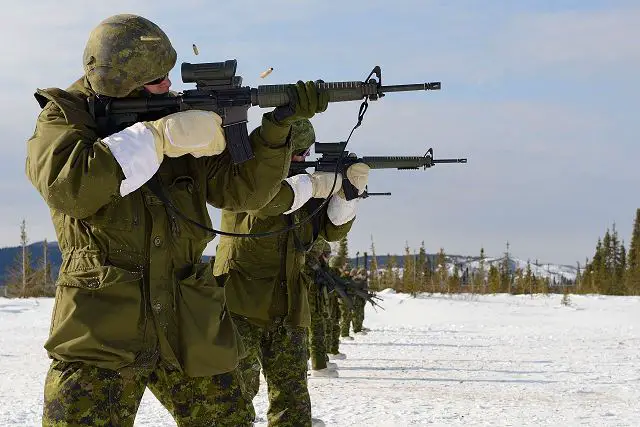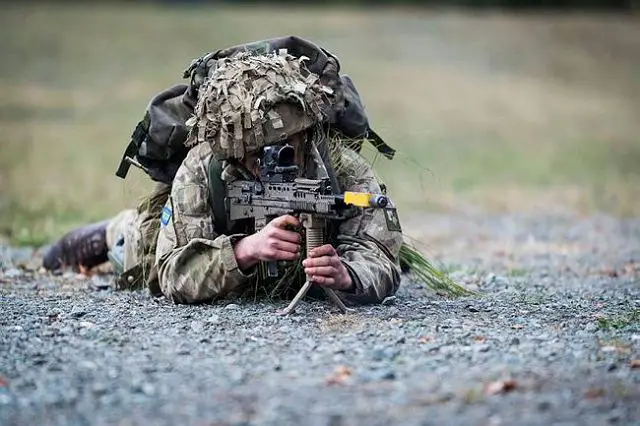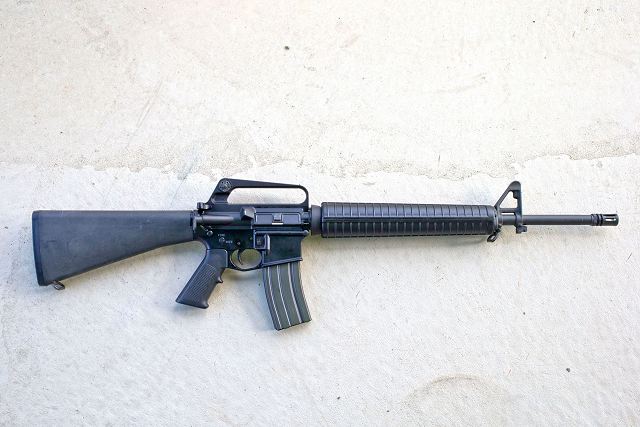Canada is studying the possibility to replace its current C7A2 assault rifle in service since 1984 12412161
|
|
|||
|
Military Defense Industry Technology - Canada future small arms
|
|||
|
|
|||
| Canada is studying the possibility to replace its current C7A2 assault rifle in service since 1984. | |||
|
Defence Research and Development of Canada (DRDC), the research agency of the Department of National Defence, has begun the Future Small Arms Research (FSAR) project, a scientific evaluation of current technologies to ensure the Canadian Army (CA)’s small arms of tomorrow will meet all of its operational needs. (Source Canadian army website)
|
|||
|
|
|||
 The Colt Canada C7A2 is the assault rifle currently in service with the Canadian Armed Forces The Colt Canada C7A2 is the assault rifle currently in service with the Canadian Armed Forces |
|||
|
|
|||
|
Dr. Franklin Wong, a researcher at DRDC’s Valcartier Research Center, leads the project with the cooperation of the Toronto Research Center. He explained that one of the key project objectives is to provide advice, using experimental data and analysis, on rifle designs and accessories such as rifle sights. For example, an ideal combat rifle sight would provide maximized shot accuracy and reduced time needed to identify and engage targets, while being compact enough not to limit soldiers’ mobility. Dr. Wong continued, “So it [bullpup layout] attempts to address the mobility versus accuracy issue. You have a shorter weapon and it should help you move through tight spaces that much easier. The question is, can the person shoot more accurately with it? And can they shoot more quickly? The FSAR team examined these human factor questions in a field trial involving troops from the Princess Patricia’s Canadian Light Infantry Regiment in Edmonton.” Accuracy is dependent upon other factors as well, Dr. Wong explained. While training certainly has an important role to play, so do design and optical technologies. “It’s very hard to predict where your bullets are going to go if your barrel, due to material used and the mechanical design, is always changing where it’s deflecting. One of the goals for our weapon studies is to understand what materials and mechanical designs give consistent barrel dynamics,” he concluded.
|
|||
|
|
|||
 The bullpup SA80 is the standard assault rifle used the British armed forces. The bullpup SA80 is the standard assault rifle used the British armed forces. |
|||
|
|
|||
|
Combat sights allow shooters to compensate if the barrel deflection behaviour remains consistent, Dr. Wong added, in addition to allowing the user to more quickly identify and engage targets. These sights fall into one of two categories: direct optics and electro-optics. “Direct optics is really like a telescope,” he explained. “It’s just pieces of glass put together in a tube with no electronics in it. Electro-optical sights are like your camera. You have an electronic sensor that captures light and then that information gets displayed on a screen.” While direct optic sights can improve reaction time in daytime conditions by providing clear, bright images, electro-optical models may have even greater potential. “Once you have a digital image, this is where you can bring in visible and thermal cameras with image processing and then have algorithms that will help, for example, fuse the images from the visible and thermal cameras or automatically detect threats,” said Dr. Wong. “And then once, for example, an algorithm has detected a threat, it will present that information along with a fused image in some form to the soldier on a micro display. So we see that there are potential gains to be made in the reduction of time needed to detect, recognize and identify threats with this technology.” FSAR commenced in April 2014. DRDC has been providing reports to the CA for each fiscal year of the project, and will continue to do so until it concludes in March 2019. Ultimately, Dr. Wong noted, the research will not only help the CA make well-informed choices but also ensure the process is as smooth as possible for manufacturers wishing to bid on the procurement program. “When it comes to bid evaluations, our characterization methods are key because we need to inform industry how any candidate pieces of equipment are going to be evaluated when it comes to the procurement process,” he said. “Then everybody is clear about what is going to happen and the soldiers will ultimately get the equipment they need in a timely manner.”
|
|||
|
|
|||
 The first version of the C7 assault rifle, a variant of the US-made AR-15 5.56x45mm assault rifle The first version of the C7 assault rifle, a variant of the US-made AR-15 5.56x45mm assault rifle |
|||
|
|
|||
|
The C7A2 5.56x45mm caliber is the current assault rifle used by the Canadian armed forces since 1984, it is manufactured by Colt Canada, a variant of the US-made Armalite AR-15, and having similar design and function to the Colt M16A3.
The C7A2 automatic rifle is an evolutionary or mid-life program upgrade from the C7 and C7A1 rifle variants. The upgrade is equipped with ambidextrous controls, low infrared signature and an extendable butt. In addition, the rifle can be fitted with a bayonet for close combat. The C7A2 is hand-held, shoulder-controlled, and capable of single or automatic fire. It is automatic rifle is a light weight weapon which is air-cooled, gas-operated, and magazine-fed. It can be easily disassembled by the user for inspection and cleaning. Its primary sighting system is an optical sight, which is supplemented by an adjustable front sight and an adjustable backup sight. |
|||


























